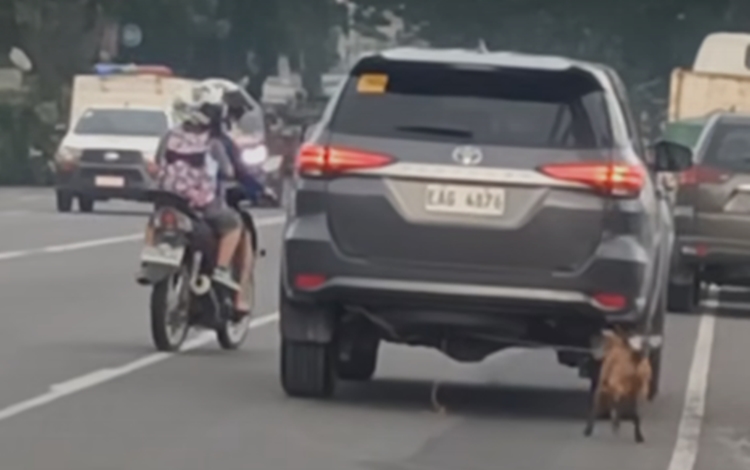Goat Tied to Moving Vehicle Provokes Anger
ANIMAL CRUELTY – A woman could not hide her frustration with a driver who tied a goat to his moving car, highlighting a lack of compassion for animals.
While driving home from Naga to Pili, Mary Ann Armillo Oira thought the driver might not be aware of the goat’s situation. However, as she overtook him, she noticed he was even smiling. Many drivers honked their horns at him, but he refused to stop. Frustrated, she decided to overtake him to block his path, but instead of stopping, the driver simply passed her by. She recorded the incident on video to capture the vehicle’s license plate number.
In the comments on her post, many netizens expressed their outrage. Some suggested that the driver intentionally tied the goat outside the vehicle. Others voiced their anger, wishing for consequences for the driver’s actions. Many commenters pointed out that even if the goat was intended for food, the treatment of the animal was still wrong and that those responsible should face penalties.

Meanwhile, animal cruelty is a significant issue in the Philippines, affecting many creatures from pets to farm animals. Despite laws designed to protect animals, such as the Animal Welfare Act of 1998, enforcement is often weak, and many cases go unpunished. This situation has created a culture where some people feel free to mistreat animals without fear of consequences.

Various forms of animal cruelty occur in the country. A common issue is the neglect of pets, as many animals are left without food, water, or proper shelter, leading to suffering and even death. Stray animals also face severe challenges, often living on the streets and struggling to find food and shelter.
Another troubling form of cruelty involves the illegal trade of wildlife. Many endangered species are captured and sold in markets, contributing to the decline of their populations. This trade often involves inhumane treatment, as animals are kept in cramped and unsanitary conditions during transport.
